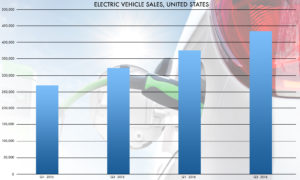What Makes a Utility Customer Want an Electric Vehicle?

EPRI Examines How Utilities Can Help Guide Customers in Adopting EVs in Their Service Territories
EPRI in 2017 will survey residential utility customers to examine their stated preferences for electric vehicles (EVs) and identify how utilities may help support EV adoption in diverse service territories.
In a 2014 EPRI survey of more than 4,000 EV owners in 11 states and the District of Columbia, only 5% said that the utility played a role in their purchase decision, and just 4% changed their utility rates after the purchase to lower charging costs. Yet, respondents appeared to envision a significant role for utilities in the EV market:
- 30–40% said that they wanted more guidance on optimizing charging through utility programs, consumer information, and home energy audits.
- 40% saw a role for the utility in installing charging infrastructure at residences and public locations.
- 59% preferred that utilities, rather than third parties, run demand response programs.

To further explore utilities’ potential roles, EPRI’s 2017 survey will examine customer preferences for various attributes of EVs (such as charging requirements, financial terms, and payback) and EV programs and products (such as incentives, charging-friendly rate structures, commuting benefits, and education) in at least five utility service territories. EPRI anticipates that the results may be used in developing software to help utilities forecast EV adoption in their service territories as a result of specific options.
“The EV market is poised for significant growth: While total EV sales in the U.S. since 2010 have been approximately 450,000, there were about 400,000 advance orders of the Tesla Model 3 in just two months this year,” said EPRI Engineer/Scientist Jamie Dunckley. “This survey will help to equip utilities with the tools to serve, advance, and prepare for this growth.”

